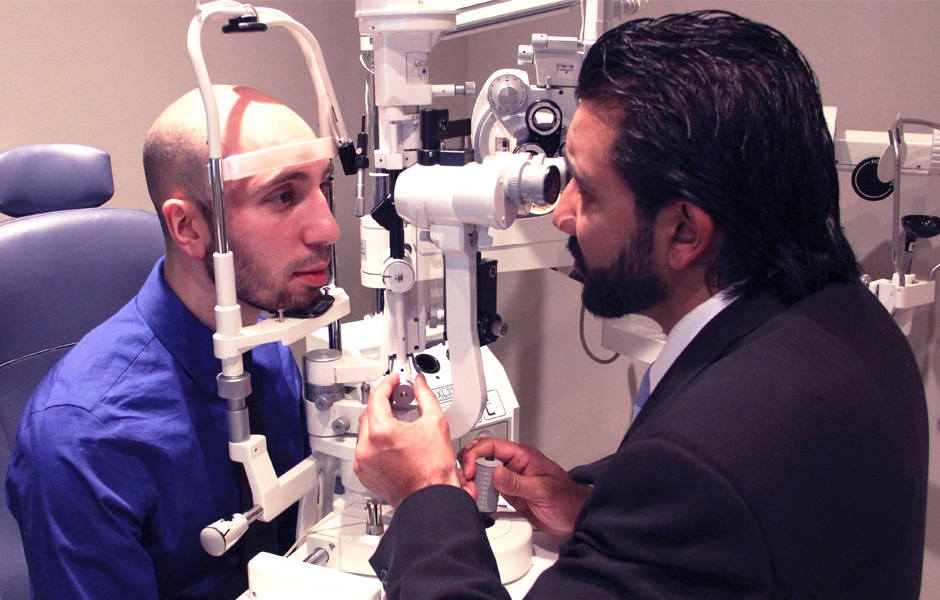Trusted Eye Doctors in Andalusia: Your Vision Health Experts
Wiki Article
Understanding the Different Vision Improvement Procedures Available for Clearer View
In the world of vision modification procedures, a wide range of choices exist to resolve refractive mistakes and give individuals with clearer sight. From the widely acknowledged LASIK surgery to less invasive procedures like PRK and implantable lenses, the field of ophthalmology offers an array of strategies tailored to suit different demands and choices. Each treatment includes its own set of factors to consider, advantages, and possible dangers. Recognizing the subtleties of these vision adjustment methods is crucial for making educated decisions concerning one's visual health. Let's discover the complexities of these treatments and clarified the course to accomplishing boosted vision clarity.LASIK Surgical Treatment
LASIK surgical treatment is a common refractive treatment utilized to deal with vision problems such as nearsightedness, farsightedness, and astigmatism. This surgical technique, which means Laser-Assisted sitting Keratomileusis, intends to improve the cornea to boost just how light is concentrated on the retina, ultimately enhancing vision clearness. During the treatment, a slim flap is produced on the cornea, and a laser is utilized to get rid of precise amounts of cells to improve it suitably. This reshaping enables light to be precisely focused onto the retina, fixing refractive errors.Among the key advantages of LASIK surgical procedure is the quick renovation in vision experienced by patients. Many individuals discover a considerable enhancement in their vision quickly after the procedure. Furthermore, a lot of people report minimal pain and discomfort throughout the surgery and recovery period. The recuperation time for LASIK is fairly fast, with lots of individuals going back to their everyday tasks within a day or 2 post-operation. In general, LASIK surgery is a preferred option for individuals seeking a long-term option for their vision problems.
PRK Procedure

PRK is an ideal alternative for people with thin corneas or those at a greater threat of eye injuries, as it does not include creating a corneal flap. The healing procedure for PRK is a little longer compared to LASIK, as the epithelium requires time to regenerate. People may experience discomfort and fuzzy vision for a few days following the procedure.
Regardless of the longer recovery time, PRK can produce excellent lead to vision renovation, making it a valuable alternative for those who may not be appropriate prospects for LASIK surgical treatment. - Andalusia Pediatrics
Implantable Lenses
In comparison to PRK where the cornea is improved directly, implantable lenses offer another method see this for fixing vision by placing fabricated lenses inside the eye. This procedure is specifically helpful for people with high levels of nearsightedness, farsightedness, or astigmatism that might not appropriate prospects for laser surgical procedures like LASIK or PRK.Implantable lenses, also called phakic intraocular lenses, work by supplementing the eye's natural lens with an artificial one. These lenses can be placed in front of the natural lens (anterior chamber) or behind the iris and in front of the natural lens (posterior chamber) By adjusting the power and positioning of these lenses, ophthalmologists can properly deal with refractive mistakes and improve aesthetic skill.
One advantage of implantable lenses is that they are exchangeable and detachable, providing flexibility for future adjustments. As with any type of surgical treatment, there are dangers involved, such as infection or cataract development. Patients considering implantable lenses need to consult with an eye treatment specialist to establish the most ideal choice based upon their private needs and eye wellness.
Corneal Rings

The procedure for placing corneal rings is minimally invasive and fairly fast, often performed as an outpatient procedure. During the surgical procedure, the ophthalmologist makes a little laceration in the cornea and inserts the rings at a specific deepness. When in location, investigate this site the rings assist to reshape the cornea, supplying a smoother surface for light to enter the eye, which can result in clearer vision.
Corneal rings are considered a reversible treatment, as they can be gotten rid of or changed if required. While they may not entirely remove the demand for glasses or call lenses, corneal rings can dramatically improve vision top quality and general visual comfort for people with keratoconus or various other corneal abnormalities.
Refractive Lens Exchange
Following the correction of corneal irregularities with procedures like corneal rings, one more vision correction technique that can resolve refractive mistakes is Refractive Lens Exchange (RLE) RLE is an operation that entails changing the eye's natural lens with an artificial intraocular lens (IOL) to correct refractive mistakes such as farsightedness, nearsightedness, and presbyopia. This procedure is specifically helpful for people that may not be ideal prospects for procedures like LASIK or PRK as a result of aspects such as thin corneas or high refractive mistakes.Recuperation time for RLE is fairly quick, and people can expect better vision soon after the procedure. As with any type of medical procedure, prospective risks and issues exist, so a comprehensive examination with an eye treatment professional is vital to determine if RLE is the ideal vision improvement option.
Verdict

In the realm of vision correction treatments, a plethora of choices exist to address refractive mistakes and offer individuals with more clear sight.LASIK surgery is a common refractive treatment utilized to fix vision problems such as astigmatism, nearsightedness, and farsightedness.While likewise a common refractive treatment, the PRK (Photorefractive Keratectomy) method differs from LASIK surgery in its strategy to correcting vision issues.Following the improvement of corneal abnormalities with procedures like corneal rings, an Clicking Here additional vision adjustment technique that can attend to refractive errors is Refractive Lens Exchange (RLE) LASIK surgery, PRK treatment, implantable lenses, corneal rings, and refractive lens exchange are all choices that can resolve various vision issues.
Report this wiki page